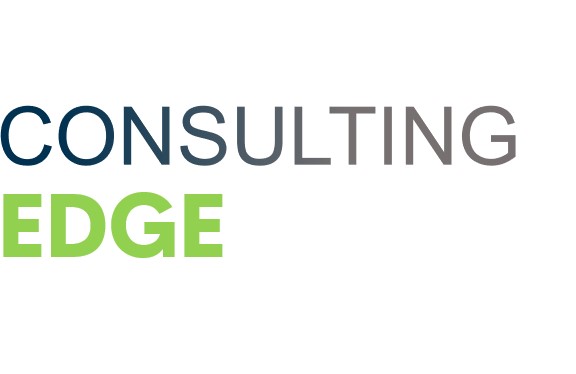It’s difficult to start a project if you don’t know who the stakeholders are. Project stakeholders can be defined as any person or group with an interest in your project. They have the power to influence the outcome of your work.
This is important because it helps you manage expectations from different people providing input for your projects. Here, we’ll discuss how to identify stakeholders and their characteristics/ So that you can effectively engage them throughout your project!
Who is a stakeholder?
A project stakeholder is a person, group of people or organization that can affect the success of a project. They often have an interest in the outcome and involve actively at one point or another.
Project stakeholders could affect by the success or failure of your project. Because they may rely on you to complete it successfully for them to receive their desired results. It’s important that you identify Project Stakes and understand what makes them unique. So that you meet their needs throughout the duration of your project.
What are the internal stakeholders?
Internal stakeholders are the people within your organization. They involve directly in the project and provide input. They may be responsible for the Project Stake or rely on you to complete it successfully.
Project stakeholders can also include:
- Project Manager
- Team members
- Decision Makers
What are External Stakeholders?
External stakeholders might not be a part of your organization, but they still have an interest in its success; which means their input. They may be affected by your Project or rely on you to complete it successfully.
They include:
- Investors
- Governments
They have an interest in the success of your project and it’s important that you understand them. It is essential to identify stakeholders early on. So, their needs are met throughout the completion of a project successfully.
Type of Stakeholders:
When it comes to Project Stakeholders, there are four different types. They often come in combinations of the following forms:
- Customers: Project Stakeholders that are affected by the Project. They can affect the Project in positive and negative ways.
- Employees: These are also Project Team Members. They can affect by the project and provide input to Project Decisions.
- Decision Makers: Those who hold final decision-making authority on key issues related to project success.
- Investors: Those who provide Project funding, but are not involve directly in the Project.
- Governments: Project Stakeholders that have an interest in Project outcomes, but typically aren’t involve directly with Project decisions.
Identifying Project Stakeholders:
Project stakes are not always obvious to identify. Sometimes they can be individuals, groups, or even other projects that don’t directly impact your work but will still have an interest in the outcome of it.
Identifying Project Stakeholders is a key step when defining who you need to communicate with throughout each phase of your project’s lifecycle.
Here are some characteristics that can make anyone a stakeholder;
- Through the project’s success or failure, they may profit or suffer.
- Offers the funding required for the project.
- Has made a substantial investment in the project.
- Participates in the project’s development.
- The project’s outputs will have an impact on them.
- Belong within the ‘chain of accountability”.
These are some project stakeholder characteristics that you should consider when engaging stakeholders. It all comes down to understanding what makes Project Stakeholders unique from each other. This is an important step when defining who to communicate with throughout your project’s lifecycle.
In order to effectively define a Project stakeholder, you should consider the following questions:
- Who will affect by the Project?
- What do they need? (outputs) & Do they have any say in what happens during the Project?
What should you know about stakeholders?
It’s difficult to start a project if you don’t know who the stakeholders are. Project stakeholders can be defined as any person or group with an interest in your project. They have the power to influence the outcome of your work. This is important because it helps you manage expectations from different people providing input for your projects.
Project Stakeholders could be affected by the success or failure of your Project. Because they may rely on you to complete it successfully for them to receive their desired results.
Identifying Project Stakes is a key step when defining who you need to communicate with throughout each phase of your project’s lifecycle!
Once you have identified each stakeholder, it’s important that they understand their roles and responsibilities on the Project Team. This will help them feel included in the project process from start to finish!
What are the priorities of stakeholders?
It’s also important to understand the Project Stakeholders’ priorities. Project Stakeholders often have goals for your Project. These goals may be different from what you want to accomplish.
As a Project Manager, it’s important to meet their goals in order to successfully complete the Project. The priorities of stakeholders have usually involved these four elements of project success and control.
Schedule: Project Stakeholders want Project to be completed on time and within budget. This is because they want to meet their goals for Project Execution. The project schedule is important to Project Stakeholders because it shows them how soon they can expect the Project’s deliverables.
Cost: Stakeholders want Project to be completed on budget and within assigned resources. This is because they don’t want their organization overspending or experiencing a loss of productivity. It is also their main interest in Project Execution which requires a thorough understanding of all project costs involved.
Performance: You should complete a project with high quality. This is because they are concerned about maintaining their organization’s reputation in the market. Also, it affects the quality which includes all product attributes that meet or exceed customer expectations.
Quality: Project Stakeholders may be concerned about Project’s quality. It is their main interest in Project Execution that requires a thorough understanding of all project costs involved. Also, it affects the quality including all product attributes that meet or exceed customer expectations.
How do communicate with your Project Stakeholders?
An effective way to communicate with project stakeholders is by hosting a kickoff meeting at the beginning of your project. This will help you identify everyone involved in the process. It will also include their needs/ expectations for each phase of your Project’s lifecycle!
In order to further engage them it’s important that they are included when communicating any issues or updates along the way. By doing this you can avoid surprises from different people providing input for your projects.
What are the rules of engagement?
Making sure Project Stakeholders understand their roles and responsibilities on Project Team is important as well. This will help them feel included in the project process from start to finish.
You should communicate with Project Stakeholders throughout each phase of the Project’s lifecycle. You can do this by hosting a kickoff meeting at the beginning of your project. This will also help you identify everyone involved in the process and their needs/ expectations for phases.
It’s also a good idea to set up some rules of engagement with your Project Stakeholders early on. You should define how they can provide input for your Project, and when it may be necessary for them to get involved during different points along the way.
Conclusion:
The project Stakeholder is an important member that the Project Manager must manage effectively in order to complete Project successfully. They have different needs, priorities, and concerns which Project Manager must recognize during Project Planning.
So, communicate with Project Stakeholders throughout different stages of Project Execution. This will increase your Project’s probability of success.






